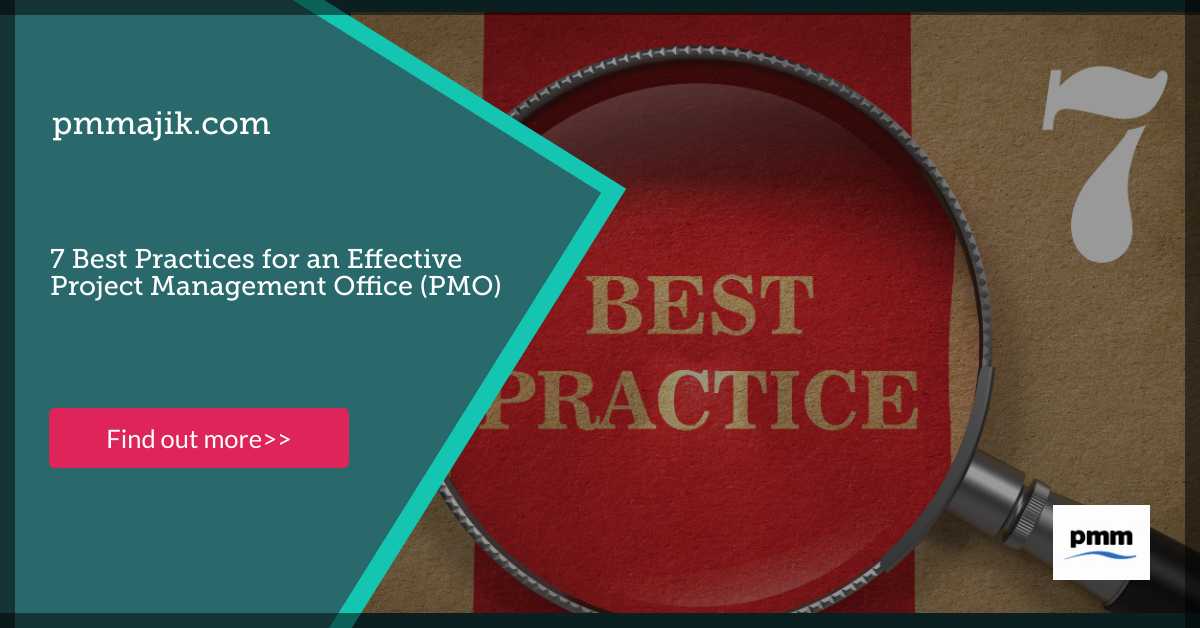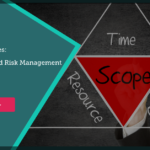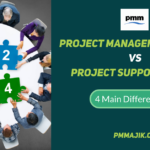Every project management office (PMO) is different, but there are constants across offices that will help you see success. We’ve brought those together in our list of the seven best practices for an effective PMO.
You want to get your projects and change agenda delivered on time and on budget. To do that, you need to make sure your offices get the fundamentals right by using these best practices to guide your activity.
We’re going to give you an overview of the actions here and get into the details of each in future posts. Here, you’ll get an overview of each practice and how it will contribute to the success of your PMO.
1. Have a solid plan for scope and risk management
Scope creep is one of the biggest risks that a project faces. It can derail a project when the deliverables change, stakeholders increase, and there is no clearly defined end result.
To keep scope creep under control, you need to provide projects with strong tools to define and plan a project. Having a project statement and a project plan will go a long way to ensuring things stay on track.
You will see an improvement in on-time and on-budget delivery.
2. Great stakeholder relationships
Each project will have different people who have a vested interest in its success. These people include:
- The project sponsor in the C-suite
- The end-user of the project deliverables
- The client who has commissioned the project
- Other business areas contributing to the project
Your PMO needs to facilitate strong communication between the project team and the stakeholders. This is key to project success and making sure what is delivered is what is expected and needed.
3. Standardisation of processes
To many PMO practitioners, this may seem like an obvious one, but it’s worth restating core principles when talking about PMO best practices.
A core role of a PMO is to provide a framework for projects to be successful, including:
- Processes
- Procedures
- Guidance on using the project methodology
- Reporting structures
When every project is working in the same way, not only is data reporting and governance easier, but you can be sure successes are documented and repeatable. You can also more easily spot when a process needs to be optimised.
4. Have relevant KPIs
When there is standardised data, you can have the same KPIs for all projects. These need to be relevant to what your office and the business aims to achieve overall.
For example, if the wider business is bringing in a focus on environmental, social, and governance (ESG) issues, you need to orientate your project KPIs towards that.
KPIs will ensure your project teams know what success looks like and can work towards improving against the same measures on every project.
5. Work on team engagement
The future of most offices now seems to be hybrid, with a mix of working from home and working from the office. This makes it more important than ever to engage with your project managers and their teams.
Direct projects to have regular feedback sessions so that managers know who needs more support and the challenges that people are facing. You also need to ensure that projects have the right communication tools so that engagement is effective.
Projects will have better, happier, more productive workers when they feel listened to and supported.
6. Build business relationships
Projects, and by extension, your PMO, will need to pull on different areas of the business at different times. This may be working closely with your HR department to get the right training and resources for projects, or it could be seconding experts from across business units into projects.
Having strong relationships across business areas will make this much easier. You can build a personal network as a member of your PMO team and engage more broadly by offering resources and support.
7. Embed the business strategy into your PMO
It is received wisdom that PMOs don’t tend to last more than two years. Whether true or not, you can work to buck that trend by making your PMO relevant to the mission and goals of the business.
Look at the strategic goals and direction of the business and make sure your PMO and projects are working towards that. If your PMO is able to decide the projects that get implemented, have a strong decision framework that is based on business goals.
Working towards the strategy will make your PMO relevant and keep you out of the firing line during restructuring.
We will expand on these seven best practices for a PMO in the coming weeks with more details about the how and the why.






